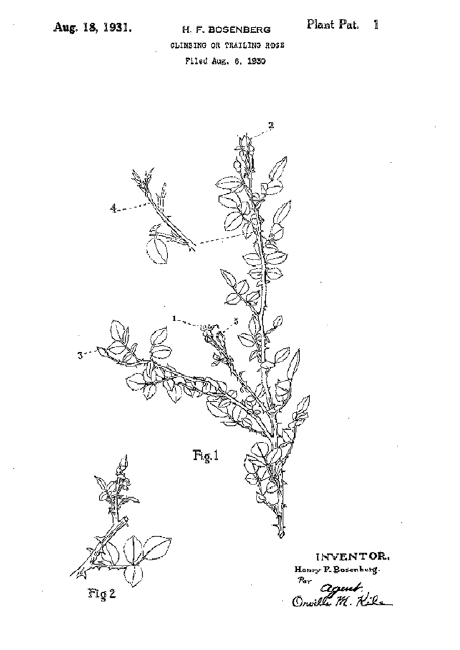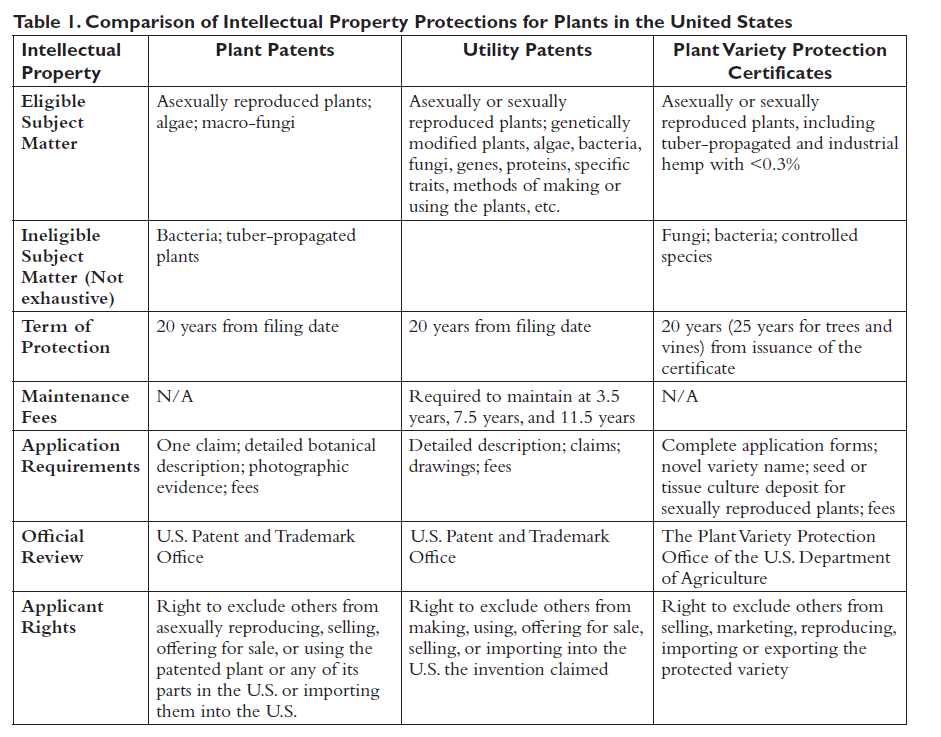Amidst the complex and interwoven fabric of plant life variations, each unique plant variety stands as a testament to the harmonious blend of nature’s craftsmanship and humanity’s boundless creativity. From the delicate velvety petals of a rare orchid to the vibrant hues of a meticulously bred rose, ornamental plants have an unparalleled ability to captivate our senses and inspire awe. Behind the scenes of this botanical spectacle lies a realm where innovation meets legal protection – the world of plant patents.
This article explains the significance of plant patents in the legal landscape and also dissects the interplay with two other pillars of intellectual property protection: utility patents and plant variety protection certificates. While each form serves as a distinct avenue for safeguarding botanical innovations, it is vital to recognize that they are not mutually exclusive. Rather, they complement each other, incentivizing the horticulture industry to develop new plant varieties.

U.S. IP PROTECTIONS FOR PLANTS
This article first lays the groundwork by comparing and contrasting plant patents with utility patents and plant variety protection certificates. Table 1 outlines the key characteristics and distinctions among different types of intellectual property protections for plants in the United States.
At the core of the plant patent legal landscape lies 35 U.S.C. § 161, a statute granting innovators the opportunity to secure exclusive rights to their novel plant varieties. This provision from the Plant Patent Act of 1930 offers inventors a pathway to protect their botanical creations, fostering a conducive environment for further experimentation and advancement in the field.
The United States government grants a plant patent to an inventor who has invented or discovered and asexually reproduced a new plant variety. The first plant patent in the United States was granted on August 18, 1931, for a variety of climbing rose called “New Dawn.”1 It was issued to Henry Bosenberg, a citizen of the United States and resident of New Brunswick, New Jersey. “New Dawn” rose is a vigorous climbing rose with pale pink, semi-double flowers and glossy green foliage. It is known for its disease resistance, hardiness, and repeat blooming throughout the growing season. This historic patent marked the beginning of plant patent protection in the United States and paved the way for the development and commercialization of countless new plant varieties in the decades to come. Since the year 2000, over 28,500 plant patents have been granted, underscoring the significance of this form of intellectual property protection in nurturing botanical innovation.
This protection extends to a plant in its truest sense: a living organism expressing a unique set of characteristics determined by its genetic makeup, which can be replicated through asexual reproduction but cannot be artificially “made” or “manufactured.” Algae and macro-fungi are regarded as plants, but bacteria are not.
THE APPLICATION PROCESS
The application process for a plant patent demands meticulous attention to detail, requiring a comprehensive disclosure of the plant’s characteristics, from its luscious foliage to the intricate patterns adorning its petals.
For intellectual property (IP) professionals navigating the intricate terrain of plant patents, an understanding of the rights and obligations bestowed upon patent holders is important.
A plant patent application encompasses various elements, including a detailed botanical description, photographic evidence, and a comprehensive claim drawn to the plant as a whole. Factors such as genus and species, growth habits, cultivar name, and distinctive botanical characteristics all contribute to the completeness of the botanical description, ensuring a robust defense of the inventor’s intellectual property rights. For example, the first plant patent, “New Dawn,” is described by “a long period of blooming” and “the new climbing rose provides a succession of blossoms on a single plant from about the end of May to the middle of November, or until stopped by frost.” The plant patent claims: “A climbing rose, as herein shown and described, characterized by its everblooming habit.”
Upon submission, the plant patent application undergoes a rigorous review process at the USPTO, adhering to established patent rules outlined in Chapter 1600 of the Manual of Patent Examining Procedure (MPEP).2
For intellectual property (IP) professionals navigating the intricate terrain of plant patents, an understanding of the rights and obligations bestowed upon patent holders is important. The grant of a plant patent precludes others from asexually reproducing, selling, offering for sale, or using the patented plant in United States or importing them into the United States. With a term of 20 years from the filing date and no maintenance fees, plant patents offer a durable and efficient safeguard for botanical advancements. Ultimately, the choice of IP protection to pursue is a business decision, and plant patents often emerge as an affordable mechanism for safeguarding innovative plant varieties.
CONCLUSION
In the fiercely competitive landscape of the horticulture industry, where innovation is the currency of progress, plant patents serve as the bedrock of protection. They empower seed and horticulture companies to invest in botanical exploration, secure in the knowledge that their creative endeavors should be safeguarded against infringement and misappropriation. By harnessing the power of legal protection, we can pave the way for a future where the gardens of innovation bloom unabated, enriching lives and ecosystems for generations to come. Experienced intellectual property professionals can provide guidance and assistance to inventors navigating the complexities of plant patenting, ensuring their intellectual property rights are effectively protected and their innovations thrive in the marketplace.
NOTES
1. See USPP1P.
2. https://www.uspto.gov/web/offices/pac/mpep/mpep-1600.html.
Related Industries
Related Services

Receive insights from the most respected practitioners of IP law, straight to your inbox.
Subscribe for Updates
